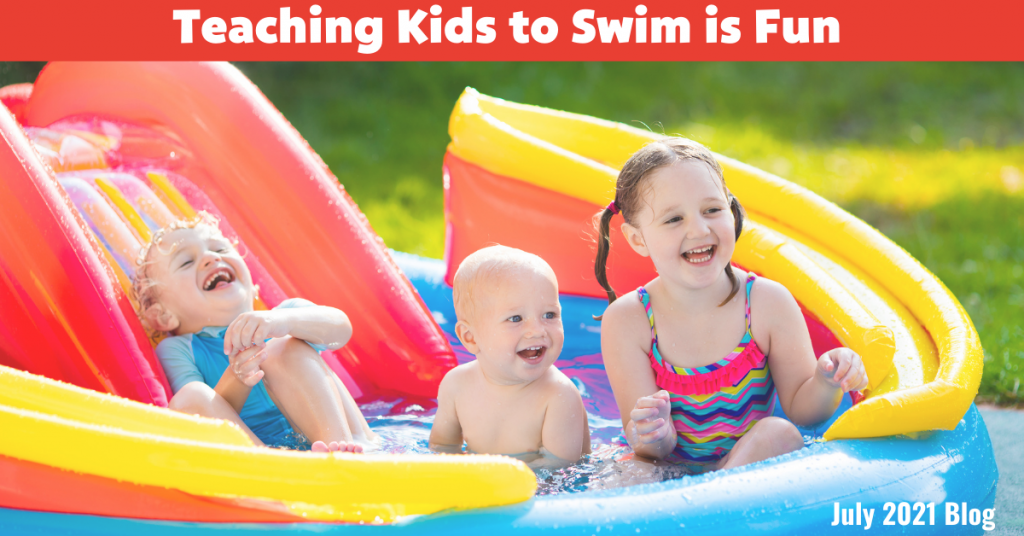Summer = Vacation = Fun
One of the top choices for a vacation is a trip to the beach. In one survey, 52% of people said they go to the beach at least once a year worldwide! Whether it’s the ocean, a river, a lake, or just the hotel swimming pool, getting their splash on is an important part of a getaway. Kids of all ages enjoy playing water games and exploring a new world. Before letting them jump off the diving board or go out past where their feet can touch, it is important to make sure the kids are strong swimmers. Not only does it keep them safe, it is a great form of exercise that empowers children to have more fun at the beach or in the pool.
Swimming is a low-impact form of exercise, meaning it elevates the heart rate without being stressful on joints. Swimming also helps build endurance, teaches breath control, and builds strong muscles.
Here are a few tips to teach children of all ages how to swim so they can have a great time in the water safely:
- Start young by familiarizing children with being in the water when possible. Thanks to floats available for purchase, it has become infinitely easier to begin exposing children to the water before they can even walk or talk! If the opportunity to go to a swimming pool or purchase a small backyard pool presents itself, use inflatable pool chairs made for a baby or toddler. Acclimating them to the experience of playing in the water early will make it easier in the future to teach them to swim. At this age, children should not be submerged under water and should be supervised at arm’s length at all times.
- Use toys with toddlers to keep them moving in the water and teach them how to kick and blow bubbles. As children begin to walk and talk, it becomes easier to communicate with them and for them to let you know when they’re having fun. The backyard kiddie pool is a great place to start engaging their motor functions and help them learn how to move their bodies correctly. In shallow water, they can be taught to lie on their bellies and kick, as well as how to hold their breath and blow bubbles. Making games out of trying to reach a ball or favorite toy on the other side of the kiddie pool can help them begin moving well in the water.
- Consider signing kids up for swimming lessons around late preschool to kindergarten age. Sometimes it is important to have an expert teach a subject. Swim lessons can be a great way to help young children learn how to swim. They are usually offered cheaply or free at community pools, and the instructors take their time. Around age 4-5, kids can begin to learn to float, to submerge themselves, and even some underwater swimming. For parents with multiple children, it can be helpful to have an instructor whose focus will be on the water and is less likely to be distracted. Of course, we strongly recommend staying and observing to ensure the children are safe, making friends, and learning. Look for programs where the instructors are CPR certified, lifeguards are on duty, and preferably more than one person is teaching each group.
- Make sure the experience is fun, no matter how old they are. Safety comes first when it comes to our kids; but if the water is made out to be a scary place, then it can scare kids out of the water for good. Using water-based toys, water balloons, and pool noodles can enhance the experience. Have a “pool party,” even if the water is not very deep, in a plastic pool in the backyard with popsicles and their favorite songs. Just make sure the water isn’t scary before they learn to swim, so they are willing to take the plunge at the right time.
How old were you when you learned to swim? How do you keep your kids active at the beach? Let us know in the comments and on social media!
Learn more about joining the Stretch-n-Grow Family here, find a class for your child here, or email us at info@Stretch-n-Grow.com!

by Bethany Verrett
Bethany is a freelance writer and editor. Click on her name to find out more!

